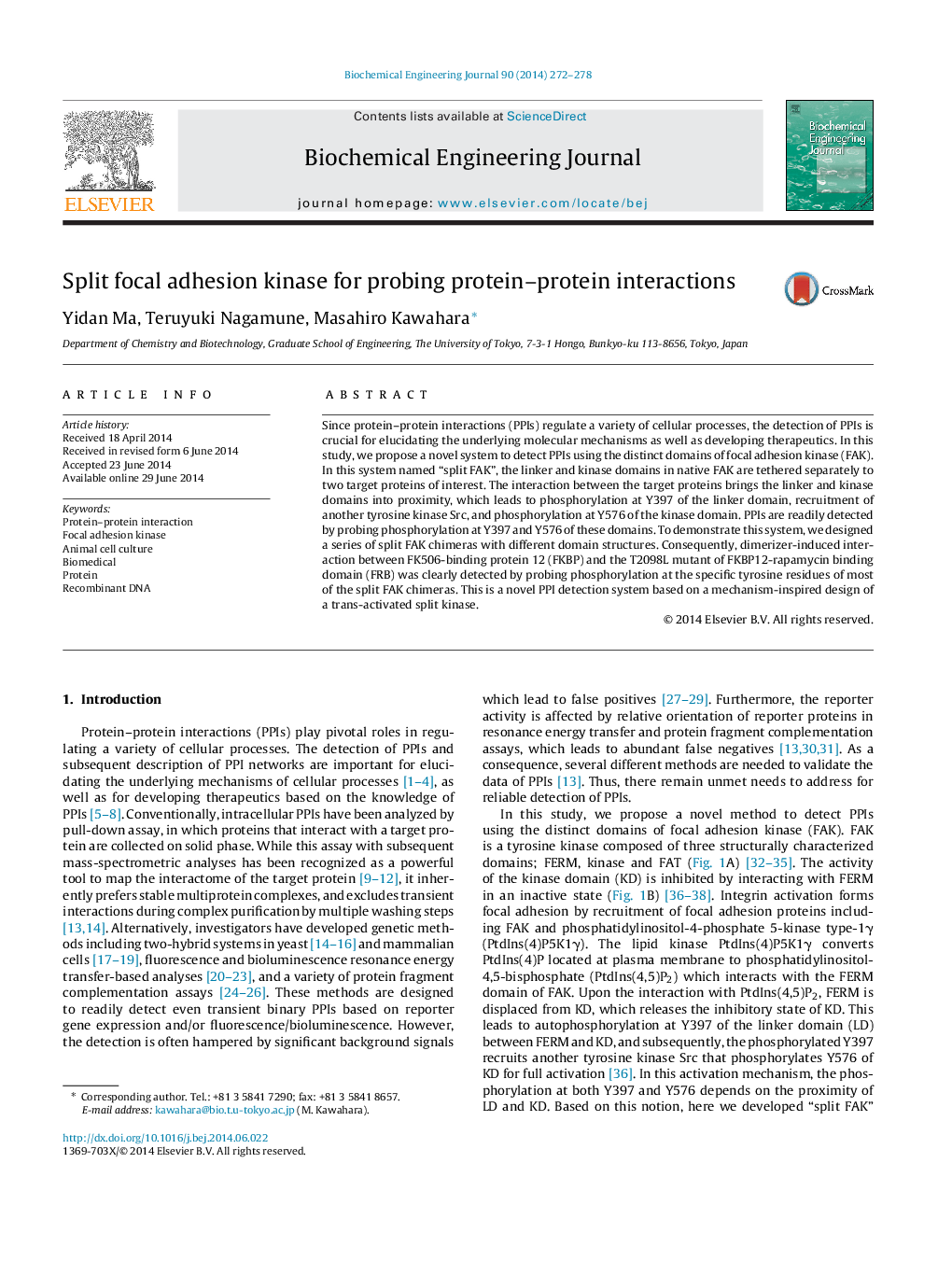| کد مقاله | کد نشریه | سال انتشار | مقاله انگلیسی | نسخه تمام متن |
|---|---|---|---|---|
| 3017 | 147 | 2014 | 7 صفحه PDF | دانلود رایگان |
• We propose a novel system to detect protein–protein interaction in mammalian cells.
• The distinct domains in focal adhesion kinase are tethered to two target proteins.
• Interaction between target proteins leads to phosphorylation at specific tyrosines.
• FKBP–FRB interaction was clearly detected by probing the phosphorylation.
Since protein–protein interactions (PPIs) regulate a variety of cellular processes, the detection of PPIs is crucial for elucidating the underlying molecular mechanisms as well as developing therapeutics. In this study, we propose a novel system to detect PPIs using the distinct domains of focal adhesion kinase (FAK). In this system named “split FAK”, the linker and kinase domains in native FAK are tethered separately to two target proteins of interest. The interaction between the target proteins brings the linker and kinase domains into proximity, which leads to phosphorylation at Y397 of the linker domain, recruitment of another tyrosine kinase Src, and phosphorylation at Y576 of the kinase domain. PPIs are readily detected by probing phosphorylation at Y397 and Y576 of these domains. To demonstrate this system, we designed a series of split FAK chimeras with different domain structures. Consequently, dimerizer-induced interaction between FK506-binding protein 12 (FKBP) and the T2098L mutant of FKBP12-rapamycin binding domain (FRB) was clearly detected by probing phosphorylation at the specific tyrosine residues of most of the split FAK chimeras. This is a novel PPI detection system based on a mechanism-inspired design of a trans-activated split kinase.
Journal: Biochemical Engineering Journal - Volume 90, 15 September 2014, Pages 272–278
